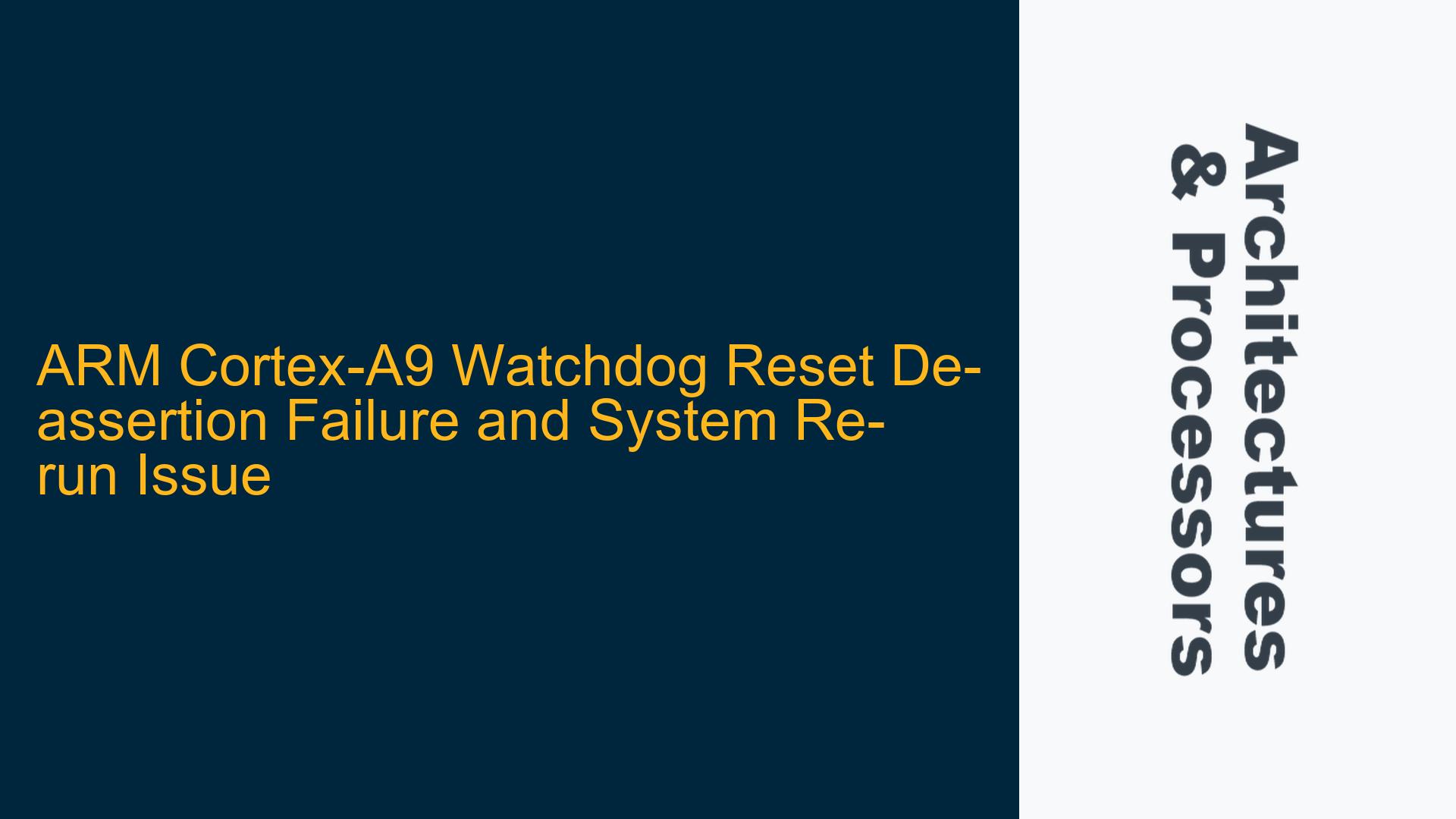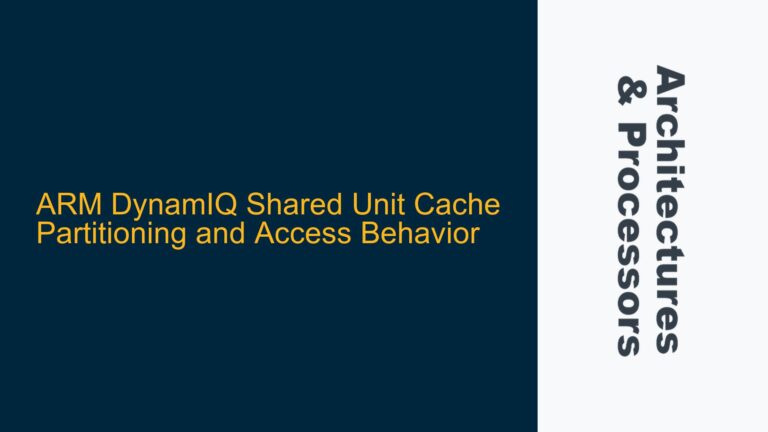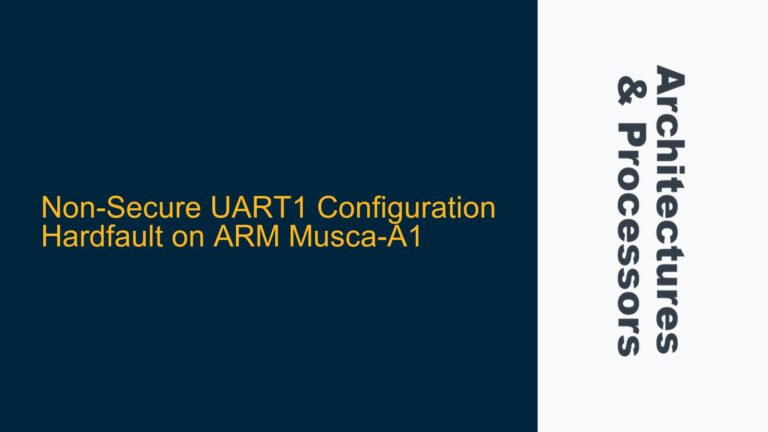ARM Cortex-A9 Watchdog Reset Behavior and System Re-run Failure
The ARM Cortex-A9 processor integrates watchdog timers (WDTs) as critical components for system reliability. Watchdog timers are designed to reset the system when software fails to periodically refresh the watchdog, indicating a potential software hang or fault. In this case, the issue involves the Cortex-A9’s watchdog timers (l4wd0 and l4wd1) successfully triggering a system reset but failing to de-assert the reset signal and restart the system. This results in the system remaining in a reset state instead of resuming normal operation.
The watchdog reset mechanism in the Cortex-A9 involves several hardware and software interactions. When the watchdog timer expires, it asserts a reset signal to the system’s reset manager. The reset manager is responsible for coordinating the reset process, including de-asserting the reset signal and allowing the system to restart. However, the system is not re-running after the reset, indicating a potential misconfiguration or hardware-software interaction issue in the reset manager or watchdog timer configuration.
To understand the problem, it is essential to examine the watchdog timer and reset manager registers, their initialization sequences, and the system’s behavior during and after the reset. The Cortex-A9’s watchdog timers and reset manager are typically configured through memory-mapped registers, and their behavior is influenced by the system’s boot code, firmware, and operating system.
Misconfigured Reset Manager Registers and Watchdog Timer Initialization
One of the primary causes of the watchdog reset de-assertion failure is improper configuration of the reset manager registers. The reset manager controls the system’s reset behavior, including the de-assertion of the reset signal after a watchdog-triggered reset. If the reset manager registers are not configured correctly, the reset signal may remain asserted, preventing the system from restarting.
The watchdog timer initialization sequence is another critical factor. The Cortex-A9’s watchdog timers require precise configuration to ensure proper operation. This includes setting the watchdog timeout period, enabling the watchdog, and configuring the reset behavior. If the watchdog timer is not initialized correctly, it may not interact properly with the reset manager, leading to a failure in de-asserting the reset signal.
Additionally, the system’s boot code and firmware play a role in the reset process. After a watchdog-triggered reset, the boot code is responsible for reinitializing the system and ensuring that the reset manager de-asserts the reset signal. If the boot code does not handle the reset condition correctly, the system may remain in a reset state.
Another potential cause is the interaction between the watchdog timer and other system components. For example, if the watchdog timer is configured to trigger a system reset but the reset manager is not configured to handle this type of reset, the system may fail to restart. Similarly, if the watchdog timer is not properly synchronized with the reset manager, the reset signal may not be de-asserted correctly.
Correcting Reset Manager Configuration and Watchdog Timer Initialization
To resolve the watchdog reset de-assertion failure, the first step is to verify and correct the reset manager register configuration. The reset manager registers control the system’s reset behavior, including the de-assertion of the reset signal after a watchdog-triggered reset. The following steps outline the process for configuring the reset manager registers:
-
Identify the Reset Manager Registers: Locate the memory-mapped registers for the reset manager in the system’s technical reference manual. These registers typically include control registers for configuring the reset behavior and status registers for monitoring the reset state.
-
Configure the Reset Manager Control Registers: Set the appropriate values in the reset manager control registers to ensure that the reset signal is de-asserted after a watchdog-triggered reset. This may involve setting specific bits to enable the de-assertion of the reset signal and configuring the reset manager to handle watchdog-triggered resets.
-
Verify the Reset Manager Status Registers: After configuring the reset manager control registers, verify the status registers to ensure that the reset signal is being de-asserted correctly. This may involve polling the status registers or using debug tools to monitor the reset signal.
Next, ensure that the watchdog timer is initialized correctly. The following steps outline the process for configuring the watchdog timer:
-
Set the Watchdog Timeout Period: Configure the watchdog timer’s timeout period to an appropriate value based on the system’s requirements. This involves writing to the watchdog timer’s control registers to set the timeout value.
-
Enable the Watchdog Timer: Enable the watchdog timer by setting the appropriate bits in the watchdog timer’s control registers. This ensures that the watchdog timer is active and will trigger a reset if not refreshed periodically.
-
Configure the Watchdog Reset Behavior: Ensure that the watchdog timer is configured to trigger a system reset when the timeout period expires. This involves setting specific bits in the watchdog timer’s control registers to enable the reset behavior.
-
Verify the Watchdog Timer Operation: After configuring the watchdog timer, verify its operation by monitoring the system’s behavior. This may involve using debug tools to observe the watchdog timer’s countdown and reset behavior.
Finally, ensure that the system’s boot code and firmware handle the reset condition correctly. The following steps outline the process for verifying and correcting the boot code:
-
Review the Boot Code: Examine the system’s boot code to ensure that it handles watchdog-triggered resets correctly. This includes reinitializing the system and ensuring that the reset manager de-asserts the reset signal.
-
Modify the Boot Code if Necessary: If the boot code does not handle the reset condition correctly, modify it to ensure that the reset signal is de-asserted and the system restarts properly.
-
Test the System: After making the necessary modifications, test the system to ensure that it restarts correctly after a watchdog-triggered reset. This may involve using debug tools to monitor the system’s behavior and verify that the reset signal is de-asserted.
By following these steps, the watchdog reset de-assertion failure can be resolved, ensuring that the system restarts correctly after a watchdog-triggered reset. Proper configuration of the reset manager and watchdog timer, along with correct handling of the reset condition in the boot code, is essential for reliable system operation.






